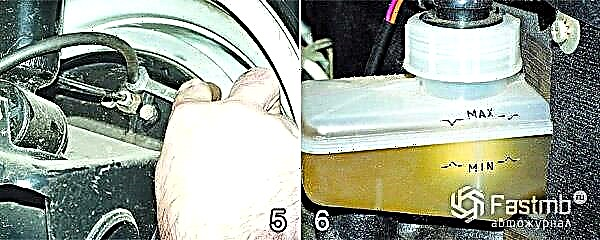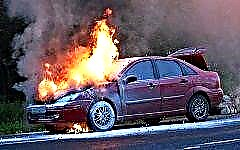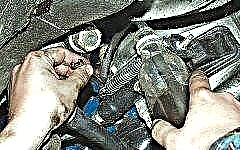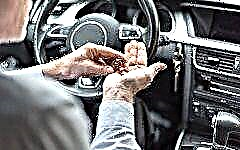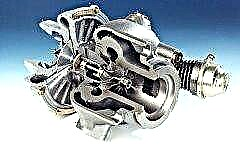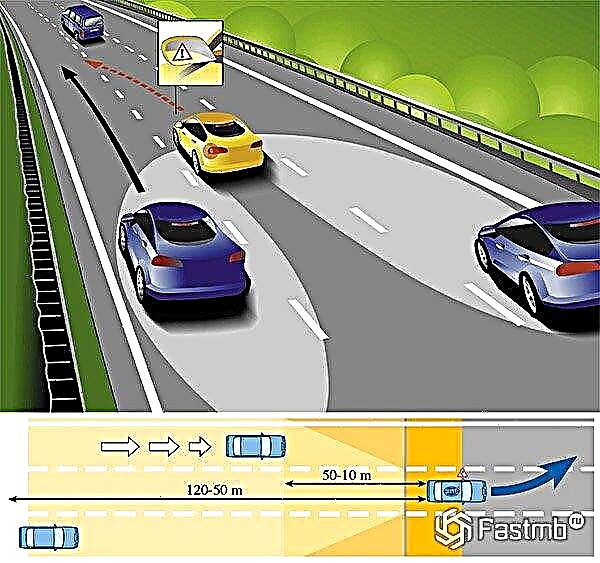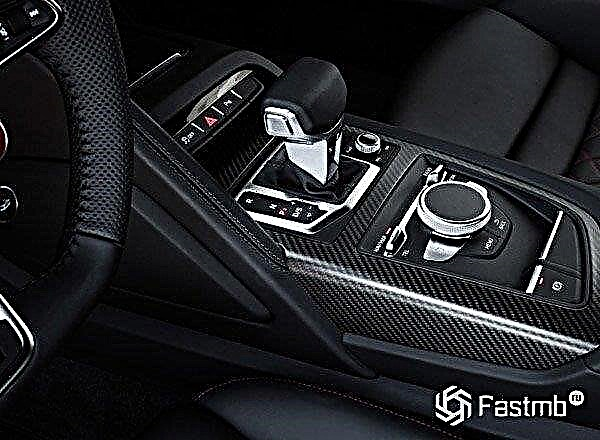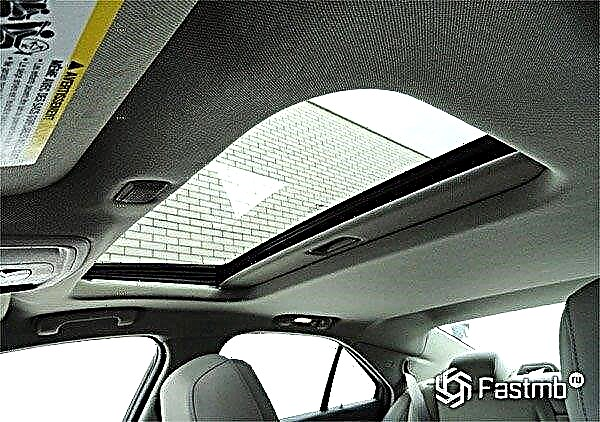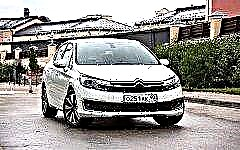

The content of the article:
- Citroen reliability
- TOP 5 most reliable Citroen models
What car can be called absolutely reliable? Which one does not have at least one "chronic sore"? The auditors of the German technical control bureau TUV analyzed more than two hundred models of various manufacturers and made a shocking conclusion - the average percentage of breakdowns annually increases by about 1.5-2%. What is the opinion of experts and consumers about Citroen cars?
Citroen reliability

First of all, both experts and owners praise the corrosion resistance of the French car industry - the metal is reliably protected by galvanics and a durable layer, avoiding rust, exposure to precipitation and road reagents.
The suspension, which previously barely nursed a hundred thousand kilometers, also ceased to cause complaints. Now it makes itself felt only after 150-200 thousand kilometers.
The problem is called the subject of joint "creativity" with BMW - a turbo engine, characterized by jerks at idle, abrupt acceleration, and in some cases - loss of power. At the same time, in general, the Bavarian unit can be called very dynamic, economical and unpretentious to fuel.
Citroen car breakdown statistics are as follows:
- 16.6% among two-year-olds and three-year-olds;
- 25.5% among five-year-olds;
- 28.4% for cars from 5 to 7 years old.
Some disadvantages are considered "hereditary", which, despite all the efforts of the engineers of the auto company, still pass from model to model, from generation to generation. These are ball joints that fail after 20,000 km, these are weak stabilizer struts and tips, this is an unreliable automatic transmission, and regular problems with the electrics
Considering all of the above, which models can be called the most reliable at Citroen?
Top 5 most reliable Citroen models
1. DS4

Produced since 2011, the hatchback has an unusual 2-color body color, available as an option, an interesting system of integration of light and xenon modules with LED direction indicators, which allows not only to provide better lighting, but also to significantly reduce energy consumption.
Standard equipment includes an adjustable steering column, a leather-wrapped steering wheel with key control buttons, heated and adjustable front seats with lumbar support, power windows, 2-zone climate control, on-board computer, six-speaker sound system, navigation system and alarm.
The hatchback has good power plants with a 6-speed "automatic":
- 1.6-liter 150-horsepower gasoline, covering 100 km in 10.8 seconds and consuming 7.7 liters of fuel;
- 1.6 liter 120-horsepower diesel, accelerating to a hundred in 11.4 seconds, while spending 3.9 liters;
- only the Crossback version is equipped with a 2-liter 180-horsepower diesel engine.
The chassis is traditional, simple, and therefore reliable: the front independent suspension of the McPherson type, which has a stabilizer, and a semi-independent spring rear.
The model has enhanced suspension stiffness, ground clearance of 170 mm, disc brakes, electric parking brake and electric power steering.
Assortment of electronic assistants It is represented by ESP and ABS systems, an emergency braking assistant, as well as a speed limiter, a tire pressure monitoring indicator, rain and light sensors, a blind spot monitoring system.
DS4 has successfully passed European crash tests Euro NCAP more than once. With very decent characteristics, handling, relative efficiency, maintainability, the owners note the same drawbacks: the narrowness of the rear door compared to the front door, which makes it difficult to get into the cabin on the rear seats, and uncomfortable suspension stiffness.
The soft metal of the body contributes to the frequent appearance of dents and chips, and the engines are sensitive to fuel quality. In addition, the model is poorly liquid in the secondary market, so it will be very difficult to resell it.
2. C-Crosser

The model name is derived from the English verb "to cross", which speaks of the unusualness of this car. It is a symbiosis of the Japanese base from Mitsubishi Outlander with the French Citroen look and the newest front end specially designed for this model.
The car is delivered to Russia with gasoline engines:
- 2-liter 147-horsepower, which with a maximum torque of 199 Nm at 4200 rpm at a speed of 184 km / h accelerates a rather big crossover in 10.8 seconds on the "mechanics" and in 12.2 seconds on the variator. In this case, the fuel consumption is 8.1 liters and 8.3 liters on the mechanics and variator, respectively;
- 2.4 - liter 170-horsepower, installed on an all-wheel drive variation, having a maximum torque of 232 Nm at 4100 rpm and capable of accelerating in 10.4 seconds at a speed of 200 km / h on the "mechanics" and in the same time with speed of 195 km / h on the variator. The engines will consume 9.4 liters and 9.3 liters, respectively.
Both come with a 5-speed manual transmission and a 6-speed manual CVT.
The all-wheel drive model is equipped with a 4WD Lock mode, which copes with the difficulties of traction of tires to the road surface by locking an electronically controlled clutch that directs torque to the rear axle.
Both versions have independent McPherson front suspension and multi-link rear, as well as a ground clearance of 215 mm.
ABS, EBD, ESP, cruise control, 6 airbags, reinforced steel body allowed the model to receive 6 stars out of 5 for the safety of adult passengers, 4 stars for the safety of pedestrians and only 3 stars when passing the EuroNCAP Citroen C-Crosser crash tests. - for child passengers.
The first conspicuous drawback is the awful quality of the paintwork, which peels off at the slightest touch. The hard plastic of the interior, according to the owners, drowns out even the music with its sounds at high speed. By the way, there are also a number of complaints about acoustics.
3.C5

The family business class station wagon has increased functionality and controllability. Thanks to a common platform with the C6 and a wheelbase of 2815 mm, the car has a large interior space.
Also, the model has laminated glass, both windscreen and side, increased noise insulation of the engine compartment, rear axle supports made of hydro-elastic material and even additional door seals.
Russian motorists can purchase copies with the following power plants:
- 1.6-liter turbocharged 150-horsepower petrol with 6-speed transmission, automatic or manual;
- 2-liter 4-cylinder 140-horsepower turbodiesel;
- 2.2-liter 200-horsepower;
- 3-liter 241-horsepower.
All diesel engines are paired with a 5-speed automatic transmission, consuming 8.2 to 10.2 liters in the city and 4.9 to 5.8 on the highway. A gasoline engine will require 8.3 to 11.1 liters during city trips and 5 to 5.8 liters on the highway.
The front-wheel drive station wagon is equipped with an independent, multi-link suspension with a stabilizer, or a classic spring suspension, as well as a Hydractive 3+ suspension with hydropneumatics, capable of adjusting the ground clearance, focusing on the state of the road surface and speed.
The presence of an abundance of safety systems - airbags, curtains, ABS, EBD, BAS, TCS, ESP, AFS, an assistant when climbing uphill - allowed the Citroen C5 to win five out of five stars in the Euro NCAP crash test.
The main disadvantages are the increased requirements for service and very low liquidity. There are claims to the suspension, and not so much to the structure as to the hydraulics, which does not tolerate Russian roads well.But the biggest problem is called the upholstery, which must be changed entirely after a year of operation.
4. C-Elysee

This car is like two peas in a pod similar to the Peugeot 301 and is being sold in the East European and North African car markets. It is popular among Russians because it is adapted to local conditions. So, this front-wheel drive sedan received double door seals, heated windshield, reinforced body structure and special engine protection.
The Russian consumer has the opportunity to purchase a model with gasoline engines:
- economical 1.2-liter 3-cylinder 72-horsepower, which consumes only 5.2 liters, develops a top speed of 160 km / h, and makes the first hundred kilometers in 14.2 seconds on "mechanics" or in 16.3 seconds on a robotic transmission;
- 4-cylinder 1.6-liter 115-horsepower, consuming from 6.5 to 7.3 liters, developing a top speed of 188 km / h, covering a hundred kilometers in 9.4 seconds using a manual box or 10.8 seconds - at work".
With solid dimensions, the car can boast of a very smooth ride, and due to the 142-mm ground clearance, it has good cross-country ability. Electric power steering, McPherson independent front suspension and semi-independent rear, balanced chassis, ventilated disc brakes at the front and drum rear have provided the perfect combination of comfort and handling.
Despite the title of "people's car" for the combination of price and quality, the model received only three stars out of five in crash tests. It is a good alternative to Hyundai Solaris, Kia Rio or Peugeot 408, as it has an interesting appearance, spacious interior and trunk, the ability to choose a gearbox.
However, at the same time, the C-Elysee has not very powerful engines, poor noise insulation, a slow response of an automatic transmission, and this sedan is also poorly sold in the secondary market.
5.C4 Picasso

A well-equipped minivan is offered in the following modifications:
- with a gasoline 1.6-liter 150-horsepower turbo engine, accelerating to a hundred in 9 seconds and spending 8.9 liters in the city and about 5 liters on the highway;
- with a diesel turbocharged 120-horsepower engine, which takes acceleration in 11.2 seconds, while consuming a meager 4.4 liters of fuel in city mode and 3.7 liters on the highway.
Equipped with a 6-speed automatic transmission, they contribute to excellent vehicle dynamics and tangible fuel economy. Independent front and semi-independent rear suspension, reduced overhangs, wider track guarantee the car stability, maneuverability and controllability.
Help the owner on trips with ABS, EBD, BAS, ESP systems, cruise control, electric parking brake, hill assistant. For the high level of safety and performance during crash tests by the standards of Euro NCAP Picasso earned five stars out of five.
To the disadvantages include a small ground clearance, which reduces the degree of cross-country ability and increased rigidity of the chassis. The owners are also unhappy with the fact that with a sufficiently weak engine, it is too gluttonous, both in terms of fuel and oil. There were interruptions in the electrical system, which can only be corrected at service centers.
Summing up, we have to admit that from year to year more and more French models are leaving the leading places in various automotive reliability ratings. Deservedly or not, they are steadily being replaced by Japanese, Korean and even Chinese cars.
Despite the elegant, laconic design, maneuverability and controllability, the creations of French engineers often “suffer” from flaws and are equipped with untested technologies. As a result, instead of the glory of technologically advanced and reliable machines, they acquire the opposite - short-lived, losing more than half of the cost after 3 years of operation and requiring too expensive repairs.
Citroen


